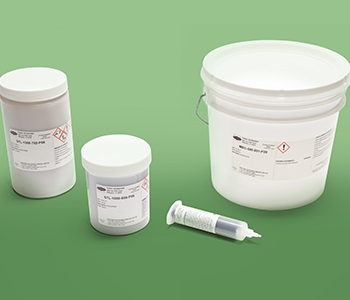Fusion soldering pates are custom blended to meet your requirements. Each Fusion Paste Soldering Alloy contains the following basic components:
- Finely atomized filler metal, alloyed to exacting standards for composition, melting range, and compatibility with base metals to be joined. Most Fusion alloys conform to industry standards while others are customized for improved properties.
- Fluxing agent, designed to remove and prevent reformation of surface oxides during heating. Type and amount are carefully matched to the individual application, ensuring consistent, dependable joints with minimal flux residue.
- Paste-like binder, which holds flux and filler metal in stable suspension while minimizing metal-flux interaction. Controlled formulation ensures consistent application and keeps paste alloy localized in the joint area.
Solder paste is an alloy or unalloyed metal which, when heated, liquefies and melts to flow into the space between two close fitting parts, creating a soldered joint. Solder paste has suitable melting and flow properties to permit distribution by capillary attraction in properly prepared joints. Solder pastes produce joints that meet service requirements, such as strength and corrosion resistance. They also meet the specifications of the American Welding Society (AWS), The American Society for Testing Materials (ASTM), and in nearly all cases, ISO standards as well.
Standard solder paste includes tin, lead, silver, lead-free, sil-phos, copper, aluminum, nickel, and jewelers gold. Fusion solder paste consists of finely atomized filler metal alloy blended with flux and a paste-like binder.
Solder paste delivers all the ingredients for a strong, void-free joint in one deposit. Stored in a pressurized reservoir, the solder paste is dispensed automatically in pre-measured amounts.
Upon heating, the liquid flux is released first, removing and preventing reformulation of surface oxides. The powder filler metal then melts and flows into the joint area, cooling to form a reliable soldered bond.
